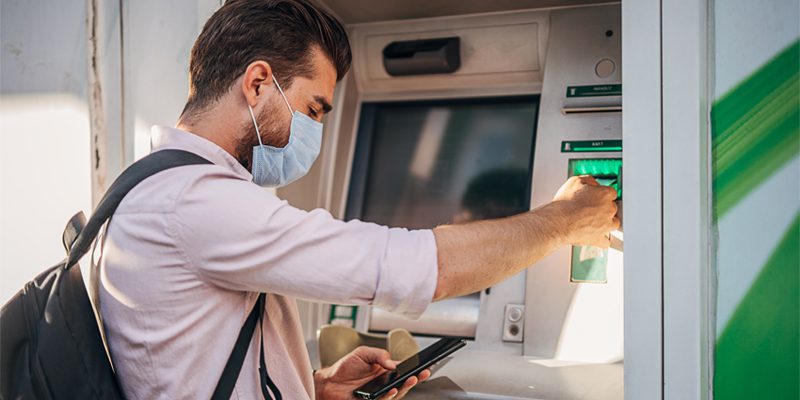During these challenging times, as business owners are looking for new ways to generate new income and increase foot traffic to their storefronts, they may want to consider adding a customer convenience that also brings in revenue – a bank-branded ATM.
Consumers are still using cash. According to the 2020 Findings from the Diary of Consumer Payment Choice, consumers used cash for 26 percent of all payments. In addition, cash remains the most used in-person payment method (35%) and is the primary payment method (47%) for purchases under $10.
Since cash is still king, here are some things to consider when adding an ATM to a business:
Added Revenue Stream
Business owners can make up to 100% of the surcharge fee income derived from having an ATM on-premise. This surcharge income, which averages more than $3.00 per transaction, is driven by the number of transactions performed on the device. The more transactions, the more income. Working with the right banking partner will help determine the total number of monthly transactions required to meet surcharge revenue goals.
Increase Foot Traffic
Convenience is important to consumers, and they increasingly rely on ATMs and online tools to meet their banking needs. The safety and security of the ATM is very important to consumers and having a trusted ATM on premise will attract new customers to a business. The Cardtronics Health of Cash publication states, “ATMs can serve as an additional sales tool for merchants, by drawing additional foot traffic as well as encouraging purchases.” Sixty-five percent of consumers who utilized an ATM at a non-bank location made a purchase at that store. Thirty-two percent visited that location specifically to use the ATM, and 57% were on-site and decided to use the ATM. As a result, having an ATM can help attract customers outside of the target market and help increase a business’s bottom line.
Savings on Credit Card Processing Fees
The transactional costs associated with what a merchant pays for accepting credit card payments ranges from 2.25%-2.5% per transaction. This equates to $2.25-$2.50 per $100 collected by the merchant. With an ATM on-site, cash-preferred customers will spend more cash at the business.
Choose the Right Partner
Choosing the right partner when implementing an ATM in a business is critical. Look for flexible partnerships either with a bank or an independent ATM deployer. Be aware of long-term contracts or hidden fees that will reduce the fee income generated by having an ATM on-site.
Leasing vs. Owning an ATM
There are a few different ways to add an ATM on-site, including a turnkey model, lease-to-own model, or just purchasing the ATM. A turnkey model requires the least amount of work and investment from the business and generally results in slightly lower returns with the benefit of less operational and maintenance headaches. Purchasing or leasing an ATM requires paying for service issues and scheduling loading cash into the machine. In terms of liability, there is no true distinction between the lease-to-own or purchase option. It is like leasing or owning a car; it is a function of financing.
Having an on-site ATM will have various benefits to a business, but it is important to think through how it adds value to a business versus what is required to maintain and secure the machine. Business owners should talk to other ATM business providers as well as possible partners to make sure the growth opportunities outweigh the work for their business.

Helping you boost your financial intelligence.
Read our financial resources from your friends at WSFS.




